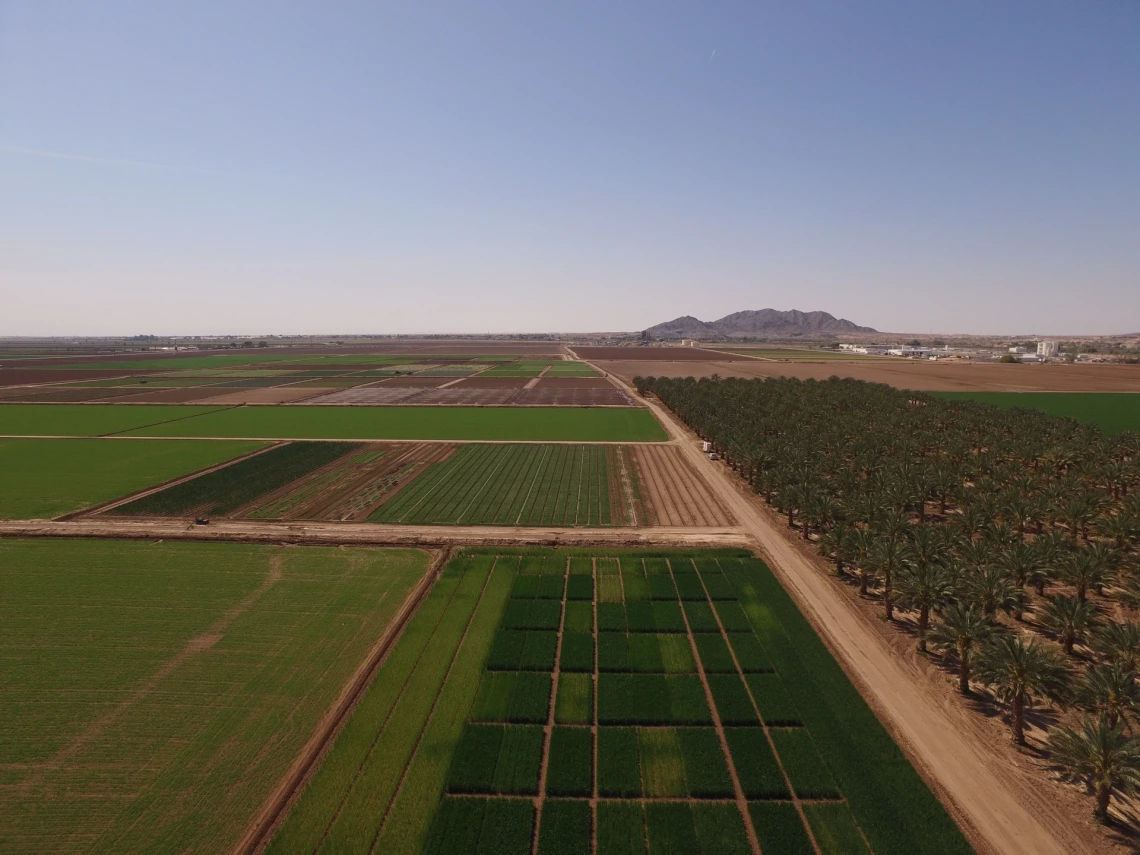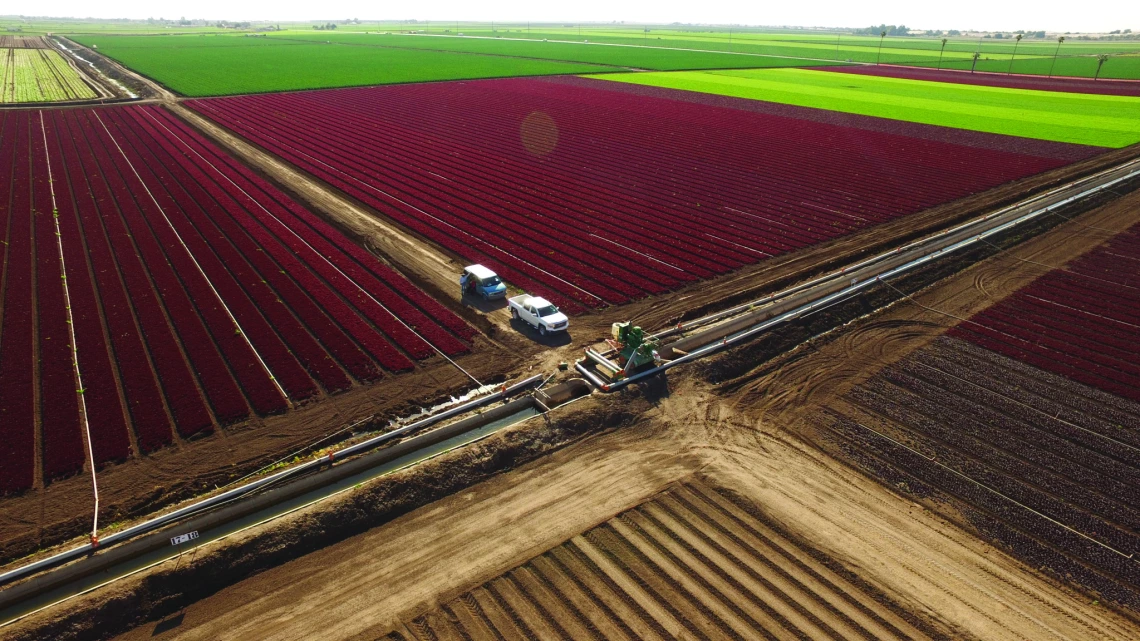Yuma’s agricultural might: Arizona’s Silicon Valley of vegetables

Yuma’s agricultural sector powers the local economy and strengthens national food security
When you think of high-powered economic hubs in the U.S., your mind probably jumps to Silicon Valley’s tech giants, Detroit’s auto industry, or Hollywood’s entertainment empire. But there’s another powerhouse quietly fueling both our regional economy and national food supply: Yuma County, Arizona.
Known as the 'Winter Lettuce Capital of the World,' Yuma’s agricultural heritage drives a multibillion-dollar economy that extends far beyond the fields.
In 2022 alone, Yuma’s agriculture and agribusiness contributed $3.9 billion to the county’s economy and $4.4 billion to the state of Arizona. That includes everything from crop and livestock production to agricultural support services, input suppliers, and even university-led research and Extension programs.
This is according to a new economic impact study produced by the Extension team in the CALES department of Agricultural and Resource Economics.
"The results were obtained using the most current and accurate data available, primarily from the latest USDA Census of Agriculture in 2022," said Claudia V. Montanía, an economic impact analyst in the department of Agricultural and Resource Economics and U of A Cooperative Extension.
Findings indicate that of the $3.9 billion economic activity in Yuma County, direct agricultural operations contributed $2.8 billion. This includes $1.3 billion from crop industries, $167 million from livestock industries, $1.3 billion from agricultural support services and suppliers, and $4 million from university-related agricultural research and Cooperative Extension activities.
The researchers found that produce grown in Yuma generated a whopping $3.2 billion in retail value, ranking the county third nationwide in sales of vegetables, melons, potatoes and sweet potatoes.
The study also found that for every $1,000 worth of vegetables sold, less than one acre-foot of water – enough to cover one acre of land to a depth of one foot – was used.
"There's this concern about how much water is being used and if it's being used efficiently," said George Frisvold, who led the study and is a professor in the department of Agricultural and Resource Economics in the U of A College of Agriculture, Life and Environmental Sciences.
"In Yuma, they use 0.63 acre-feet to produce $1,000 worth of crops, compared to the rest of the Colorado Basin, where the average amount used is 1.44 acre-feet to produce a similar value."
But this isn’t just about efficient or sustainable farming, and anyone who's spent time in Yuma knows Ag means business—it’s about how a single industry can shape an entire local economy.

Why Yuma’s agriculture matters (way more than you think)
Agriculture in Yuma is an economic juggernaut. In economics, industries fall into two main categories:
Basic industries: Those that produce more than what’s needed locally and export goods (bringing money into the region).
Non-basic industries: Those that primarily serve the local population.
"Yuma is a dynamic place with sophisticated agricultural operations that play a key role in winter vegetable supply chains at the national level," said Dari Duval, an economic impact analyst in the department of Agricultural and Resource Economics and U of A Cooperative Extension.
Every winter, lettuce, broccoli, and melons grown here flood supermarkets across the U.S. In economic terms, that means Yuma’s farms aren’t just feeding people (nationally)—it anchors the local economy.
In other words, Yuma’s agricultural industry isn’t just big—it’s essential. It brings outside money into the local economy and provides thousands of jobs.
Over 20% of wages and jobs in Yuma County are related to these activities
Generating more than 12,000 jobs
More than $530 million dollars in total wages (and that's without considering and accounting for animal production and aquaculture-related activities)
One way to measure how much a local economy depends on a particular industry is by looking at a metric called the Location Quotient (LQ).
LQ helps us understand, again, whether an industry is serving only local demand or if it's a major economic driver that exports goods and services beyond the region.
LQ of 1 → The industry has the same share of employment locally as it does nationally. This suggests it mainly serves the local population.
LQ above 1.25 → The industry is more concentrated than the national average, meaning it likely produces more than the region consumes and exports its goods or services.
The higher the LQ, the more specialized an area is in that industry—indicating that it’s a core part of the local economy.
So, where does Yuma stand?
Vegetable & melon farming: LQ of 58 → Yuma has 58 times the national average share of workers in this industry.
Post-harvest crop activities: LQ of 51.4
Farm labor contracting: LQ of 49.7
Crop harvesting: LQ of 93.8 → Yuma is one of the most specialized regions in crop harvesting in the entire U.S.
"The study findings provide a very important resource for planning and decision making," said José Quintero, an agricultural enterprise analyst in the Department of Agricultural and Resource Economics and U of A Cooperative Extension.
"We found that Yuma is to agriculture what Hollywood is to movies, and what Silicon Valley is to computers."
| Industry & Location | Location Quotient (LQ) |
|---|---|
| Yuma, AZ - Vegetable Farming | 58.0 |
| Silicon Valley - Computer Manufacturing | 66.4 |
| Seattle (Snohomish County) - Aerospace Manufacturing | 34.3 |
| Detroit - Auto Manufacturing | 18.5 |
| New York City - Investment Banking | 14.1 |
| Hollywood - Film & Music Production | 11.4 |
You read that right. Yuma County's concentration in produce farming alone rivals Silicon Valley’s grip on tech—it’s more than five times higher than Hollywood’s dominance in film & music, and more than three times greater than Detroit’s auto manufacturing.
So, why should we care about Yuma’s agriculture?
Because its economic base is crucial not just to Arizona, but to the broader U.S. economy. Yuma’s high specialization in agriculture brings both jobs and money to the county, while also making it a linchpin of the national agricultural supply chain.
In other words, when you eat a salad or enjoy fresh veggies in the winter, there's a good chance Yuma played a role in putting that food on your plate. And that’s not just good for your health—it’s vital for the health of the economy in Yuma County, the state of Arizona, and beyond.
